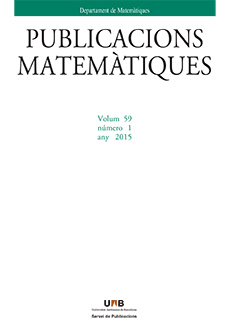Abstract
The main result (roughly) is that if $(H_i)$ converges weakly to $H$ and if also $f(H_i)$ converges weakly to $f(H)$, for a single strictly convex continuous function $f$, then $(H_i)$ must converge strongly to $H$. One application is that if $f({\operatorname{pr}}(H))={\operatorname{pr}} (f(H))$, where ${\operatorname{pr}}$ denotes compression to a closed subspace $M$, then $M$ must be invariant for $H$. A consequence of this is the verification of a conjecture of Arveson, that Theorem 9.4 of [Arv] remains true in the infinite dimensional case. And there are two applications to operator algebras. If $h$ and $f(h)$ are both quasimultipliers, then $h$ must be a multiplier. Also (still roughly stated), if $h$ and $f(h)$ are both in $pA_{\operatorname{sa}} p$, for a closed projection $p$, then $h$ must be strongly $q$-continuous on $p$.
Citation
Lawrence G. Brown. "Convergence of functions of self-adjoint operators and applications." Publ. Mat. 60 (2) 551 - 564, 2016. https://doi.org/10.5565/PUBLMAT_60216_09
Information





